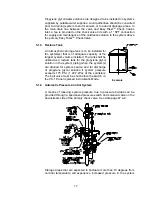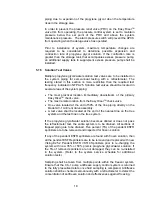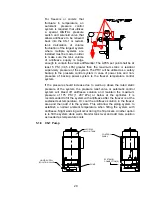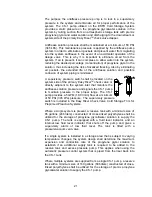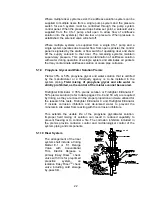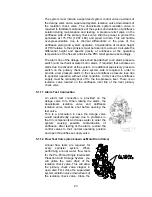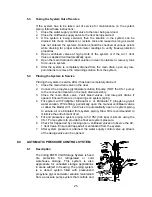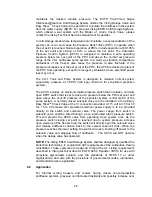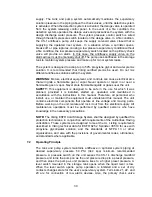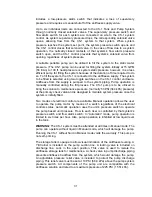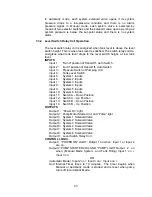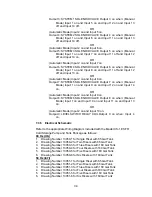
19
5.1.6 Re-Charging System Piping with 35% or 50% Premix Propylene
Glycol/Water Solution
A suitable portable pump can be utilized to fill the system. The CS-1
pump can be used for filling the system initially at 15 GPM (56 l/min) to
100 ft. head pressure or system static pressure, however, it is a less
efficient pump for filling the system because of the duration of time
required to do so.
The CS-1 pump is to be utilized to bring the antifreeze solution to
maintenance pressure above the Easy Riser
TM
check valve, [normally 50
PSI (345 kPa)] and is designed to maintain system pressure once the
system is initially filled. Also, repeat air bleed from the system as
described above. If using the Viking Model AV-1 Air/Vent Valve assembly,
the air will automatically be vented during the fill cycle.
5.1.7 Expansion of Antifreeze in the System
In a freezer system, the atmospheric temperature is typically controlled at
a pre-determined desired temperature year round. The most likely time
over-pressurization of the system might occur due to temperature
fluctuation is in a warm-up mode of the freezer, which is very rare once it
is put into service. Also, variation in system pressure due to temperature
differential can be substantial.
When filling the system with antifreeze solution, all air must be bled from
the system in order to make final and maintained antifreeze solution
pressure non-compressible.
The proper relief valve setting shall be selected at 125% above the
maximum water supply pressure at the PRV location for constant
temperature freezers or coolers. This valve is required to protect the
sprinklers from over-pressurization.
At the sprinklers, the maximum of 175 PSI (1 207 kPa) is required, at the
ceiling location. This valve must be directed to a proper drain location, as
it is an automatic valve and will operate without warning.
Pressure relief valves operate at 90-105% of design set
pressure and close at 80% or greater than design set pressure.
The pressure relief valve set pressure must be at least 125% of
the maximum water supply pressure at inlet of the primary
check valve in order to not allow operation other than to protect
the sprinklers of system at 175 PSI (12 bar).
Summary of Contents for ESFR
Page 5: ...5 Figure 1 Straight Through Configuration...
Page 6: ...6 Figure 2 Angle Style Configuration...
Page 10: ...10...
Page 35: ...35...













